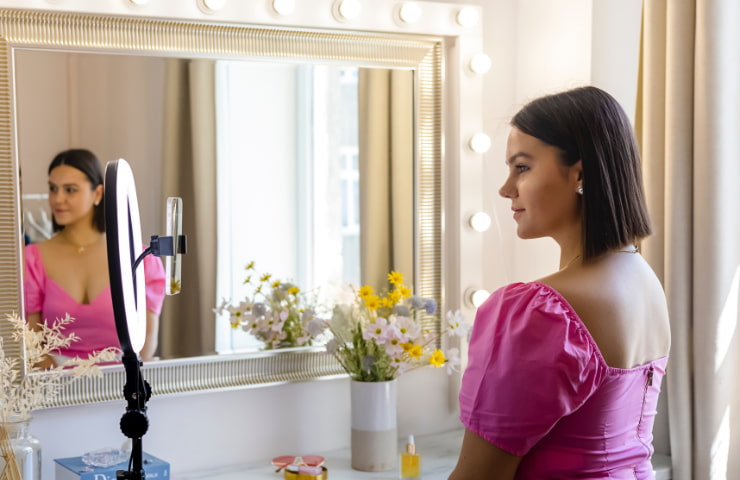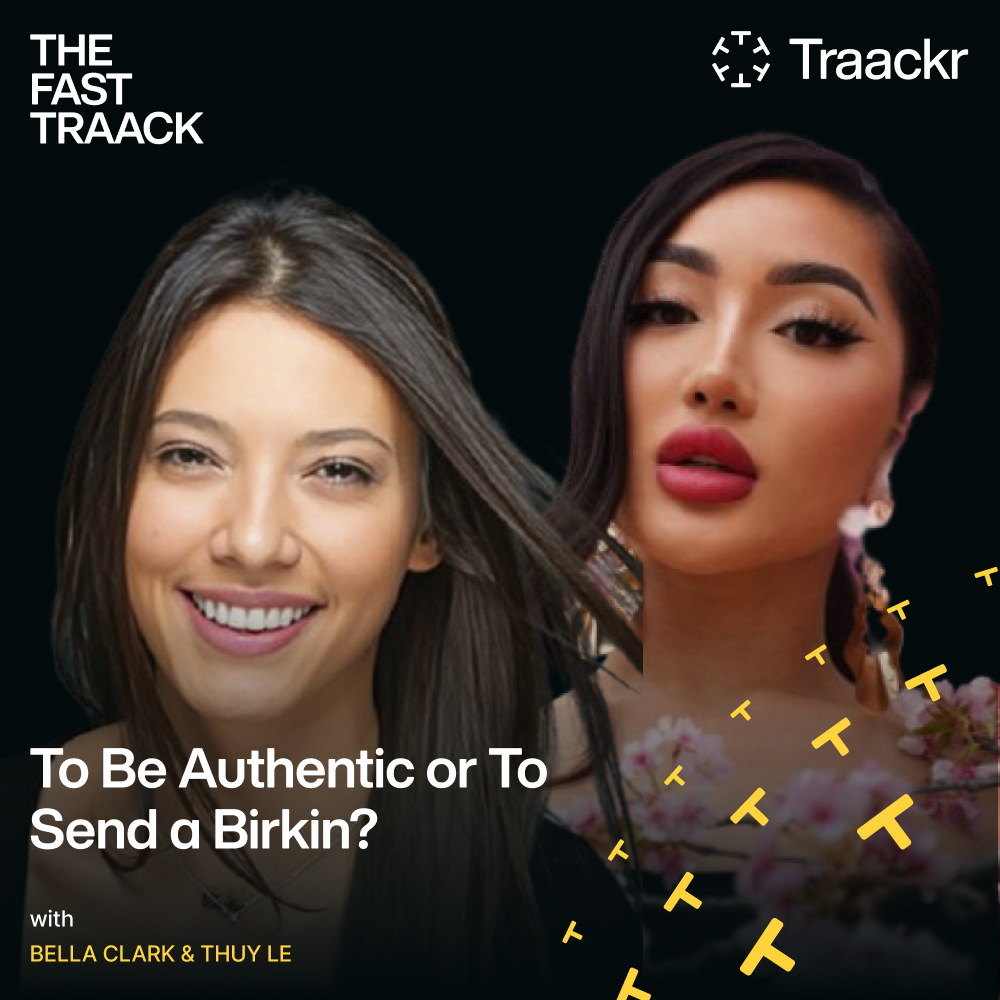Finding Top Influencers: 4 Influencer Statistics To Look For

Every good marketer knows that a successful influencer program starts with finding top influencers who are a good fit for your brand. That being said, this doesn’t come easy. In fact, 81% of marketers say that finding the right influencers is still a main challenge.
The best way to overcome this challenge? Data. Below we outline some key influencer statistics to look for when building out your influencer network.
4 Influencer Statistics to Help You Find Top Influencers
1. Audience Size
Audience size can be a huge determinant in whether you decide to partner with an influencer. Influencer tiers are determined based on a creator’s follower count - here’s a breakdown of influencer tiers:
- VIP: 5M+ followers
- Mega: 1M+ followers
- Macro: 500K+ followers
- Mid: 50K + followers
- Micro: 10K+ followers
- Nano: 1K+ followers
While it’s good to know the different influencer tiers, it’s important that you don’t use them as the main influencer statistic for determining a creator’s value or fit. Tiers are just one way to categorize creators, but how you use this information is really dependent on your goals. Even though it is not uncommon for partnership costs to fall along the tier lines (e.g. VIPs and megas likely charge more than smaller tiers), that doesn’t necessarily mean that the bigger tiers are the right fit for your campaign. In fact our recent US Influencer Marketing Impact Report found that nano and micro influencers that post sponsored content see efficient results. If you’re looking for a real life example of this, you can look at Eau Thermale Avène! This brand used Traackr’ influencer search to find its sweet spot of influencers — mid-tiers (50K+) with highly engaged audiences. Or, you could look to how IMAGE Skincare engaged top influencers in nano, micro, and macro tiers in order to build strong and engaged communities. The brand found these partners by focusing on engagement rates (instead of total engagements or video views), allowing them to identify folks that create compelling content, regardless of their audience size.
The other thing to consider is developing a multi-tiered approach. For example, hims & hers has used a strategy that involves top influencers from multiple tiers, with remarkable success. One way to do this would be to bring on a large influencer (VIP or mega) to be the face of the campaign, and then hire micro and macro influencers to produce content with the campaign messaging, thereby bolstering awareness.
Tip: Did you know that good partnerships start even earlier in your planning? Learn how setting good goals and KPIs informs how you find top influencers, define partnerships, and run campaigns.
2. Audience Demographics and Credibility
When conducting an influencer search it's crucial that potential partners are already reaching your target audience. A creator’s audience demographics like age, gender, location, interests, etc. should align with your customer profile. While it is generally best practice to look at audience demographics for every brand, there are a few instances that it is especially important for:
- Seeding campaigns. Is the bulk of a creator’s audience in a place that your product can ship to?
- Age-specific or restricted products. Do you know that your product is best for a specific consumer age (e.g. acne products for teens) or does it have age-restrictions (e.g. alcoholic beverages)?
Audience credibility is another key influencer statistic to evaluate. This is typically a bit harder to do manually, but can be done easily with an influencer marketing platform. For example, Traackr can help you dig further into the actual make-up of an influencer’s audience, mainly analyzing:
- Credibility. See the percentage of an influencer's total audience (defined by followers) that is authentic and the percentage of an influencer’s engaged audience (defined by likes) that is authentic.
- Type. See a breakdown of the influencer’s audience - how many are bots vs mass followers (unlikely to see new content) vs influencers vs regular consumers? If there is a low percentage of regular consumers, it’s possible that sponsored content with this influencer won’t reach your target audience.
- Reachability. To see if an influencer’s organic or sponsored post would reach their audience, Traackr reveals the percentage of followers that follow a certain number of accounts. This is helpful for determining whether an audience would actually be impacted by content! For example, someone who is following more than 1,500 accounts will most likely not see sponsored posts.
3. Performance Metrics
Most marketers know that performance metrics are an important category of influencer statistics to evaluate when looking for new partners. A standard list of performance metrics include:
- Reach
- Impressions
- Total number of engagements
- Total number of video views
- Engagement rates
- Video view rates
So out of the list, what are the most important ones to focus on? We can take some clues from this:
“As a best practice, avoid metrics that solely focus on volume or absolute numbers, as the data will often skew unfairly (and inaccurately) towards influencers with larger audiences. For example, if you’re comparing a VIP (5+ million followers) influencer to a macro tier influencer (50K-250K followers), of course the VIP is likely to achieve more views due to their scale.” — Halie Soprano, senior influencer marketing consultant at Traackr
The best way to get around this “issue of scale”, and instead hone in on relative impact? Engagement and video view rates. Comparing influencers and their content based on view or engagement rate normalizes the size of their audience and ultimately means that the evaluation of their performance will be proportional to their reach (i.e. there’s no unfair bias towards influencers with large followings).
Of course, there are two caveats to this! One, if your goal is all about broad awareness and less about engaging consumers then your campaign may be better served by influencers that have big reach and earn a ton of impressions (just know that this doesn’t guarantee that those that see it will remember it). Two, not all engagement is good. It’s important to pair quantitative influencer statistics with a qualitative analysis. More on that in the next section.
4. Content Quality and Relevance
Last but not least, content quality and relevance. While this is technically an influencer statistic in a strict sense, it is a critical element to consider when searching for and evaluating potential partners. Here are some important areas to focus on:
- Audience sentiment. It’s great if an influencer has a high engagement rate on their content, but sometimes not all engagement is good. Take a moment to dig through the comments on some of their posts (both high performing and not) to see how their audience is responding. Are the comments positive? Negative? Just emojis? Or are they substantive? Does the influencer respond back to them, indicating that they are focused on building out true community?
This next set of items can be quite time consuming if done manually. If you are thinking of getting an influencer marketing platform (or already have one) make sure it allows you to search through past content with keywords and hashtags. This will not only make finding top influencers faster, it will allow you to really search with nuance and specificity!
- Sponsored content volume. Using your influencer marketing platform, search past content for keywords like “use my code”, “link in bio”, “#sponsored”, “I partnered with”, etc. This should give you a rough idea of an influencer’s paid-to-organic content ratio. If content is tipping more in the paid direction, it can take away from a creator’s authenticity and drown out your brand. This type of search also allows you to conduct a performance analysis on content that is specifically sponsored, giving you a sense of whether their audience engages with promotions.
- Brand and product affinity. The best partners are the ones that already love your brand. Search past content for mentions of your own brand, mentions of your main competitors, or even products/ingredients that are related to your products! This will give you an idea of whether the influencer’s audience is oversaturated (too many mentions of competitors) or already primed to love your brand and take advantage of any deals that are offered.
- Brand values fit. Last, but certainly not least, an influencer partner should align with your brand’s values. This could mean a variety of things. Does your brand stand up for the environment and sell sustainable products? Then you probably won’t want to partner with an influencer who wears a lot of fast fashion. Does your brand promote diversity, equity, and inclusion? Then you probably want to partner with a diverse set of influencers who speak up on those topics. The more aligned your influencer’s values are with your brand values, the more authentic the partnership will be. Similar to the other points listed here, you can achieve the bulk of this work by compiling a list of keywords that are relevant to your values and then search through influencers’ past content for them. If you’re looking for an example of a brand that has done this well, check out how Beekman 1802 found top influencers who shared its value of “kindness”.
Again, while these items aren’t necessarily "statistics" in the strict sense, they are qualitative insights that can help you bring on influencers that are a good match for your brand and can become long term partners.

Listen to Bella Clark, Head of Influencer and Partnerships at Lipton, and content creator, Thuy Le, share why authenticity outshines extravagance when it comes to creator partnerships.
Listen nowSee which brands are leading the way in influencer marketing with our real-time performance leaderboard.
View brand leaderboard.jpg)
Traackr Welcomes Ramzi Saba as Chief Technology Officer
_Nick_Fancher_Photos_ID6169.jpg)
Unlocking Creator Value for Global Brands in the Age of AI

The UK’s New “Less Healthy” Food & Drink Ad Rules Just Changed Influencer Marketing
Level up your creator marketing expertise
Get industry insights and updates straight to your inbox.
